The OnePlus 7 Pro presented today is a mobile that could not have existed, and no one would have missed it. Looking at the brand’s journey in recent years, it is not unreasonable to think that its philosophy of terminals flagship killer could have been successfully stretched for a couple of years through new models capable of offering a fantastic experience in terms of hardware. + software, but cutting back on those aspects that only “ultra-premium” mobiles stand out.
But it has not been that way. Instead of following the most obvious path, OnePlus has decided to complicate life to surprise us with the most ambitious mobile in its history. And – sorry for the spoiler – seldom has such a great move by a company made me so happy.
All the decisions made by OnePlus throughout its five-year history, both good and bad, have served as the basis for creating this new OnePlus 7 Pro. A mobile that, unlike its predecessors, not only comes with the attitude but also with the skills to become one of the great protagonists of the game for the throne of mobile telephony in 2019.
OnePlus 7 Pro: a technical sheet of characteristics and specifications
| OnePlus 7 Pro | |
| specs | |
| Dimensions | 162.6 x 75.9 x 8.8 millimeters / 206 grams of weight |
| Screen | 6.67-inch Fluid AMOLED at 60-90 Hz / sRGB and DCI-P3 support |
| Resolution and density | Quad HD+ (3,120 x 1,440 pixels) / 19.5:9 / 516 ppi |
| Processor | Qualcomm Snapdragon 855 Qualcomm AI Engine Adreno 640 . GPU X50 Modem (Solo en OnePlus 7 Pro 5G) |
| RAM | 6/8/12 GB LPDDR4x |
| Storage | 128/256 GB UFS 3.0 2-LANE |
| Operating system | Android 9 Pie under OxygenOS 9.5 |
| Cameras | Trasera triple: Sony IMX586 de 48 MP (1,6 µm) f/1.65 con OIS + EIS + “Tele” de 8 megapíxeles (1 µm) f/2.4 con OIS + “Ultra Wide” de 16 MP f/2.2 (117º) / Flash LED Dual, PDAF+LAF+CAF / Zoom óptico 3x Front: Sony IMX471 16 MP (1 µm) f / 2.0 with fixed focus and EIS. |
| Video | Rear camera: Up to 4K at 30-60 fps. Super Slow Motion 1080p at 240 fps or 720p at 480 fps / Time Lapse and video editor included Front : camera up to 1080p at 30 fps / Time Lapse |
| Battery | 4,000 mAh warp Charge 30 (30 W) 5V/6A |
| Others | Dolby Atmos Audio, Alert Slider, Dual Noise Canceling Stereo Speakers, X-axis Haptic Vibration Engine, Optical In-Screen Fingerprint Reader, USB 3.1 Type-C, Dual Nano-SIM |
| Connectivity | Wi-Fi 2×2 MIMO, Wi-Fi 802.11 a/b/g/n/ac, 2,4-5GHz Bluetooth 5.0 with aptX and aptxHD, LDAC, and AAC support NFC GPS (L1+L5 Dual Band), GLONASS, BeiDou, SBAS, Galileo, A-GPS |
| Colors | Negro (Mirror Gray), Dorado (Almond), Azul (Nebula Blue) |
| Departure date | May 2019 |
| Starting price | From 709 euros |
The best of the OnePlus 7 Pro
Screen
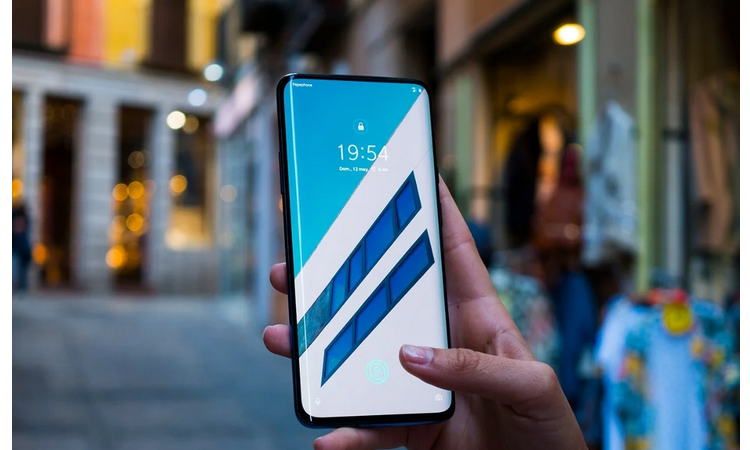
After so much time testing terminals, there are few occasions in which such an essential aspect as the screen makes you frown and be somewhat perplexed. This is one of them. The first thing that came to mind when starting the phone was, “Is this a OnePlus? ” Well, the screen of this phone does not look at all like the rest of the models released by the company to date, From today.
With a diagonal of 6.67 inches and margins conspicuous by their absence – and no, there is no “notch” either – the screen of the OnePlus 7 Pro is the largest seen so far in a mobile of the brand. But it is also the best, and that is obvious in the first seconds of use with the terminal.
The screen of the OnePlus 7 Pro is the largest seen so far in a mobile of the brand. But it is also the best.
To achieve this, OnePlus provides the panel with the so-called technology Fluid AMOLED and a Quad HD + resolution, thus being a pioneer in the brand’s catalog for being the only one that has exceeded the 1,080-point barrier. However, its most striking aspect about the panel is its ability to refresh the content at 90 Hz instead of 60 like most current mobiles. The result? Simple: wow .
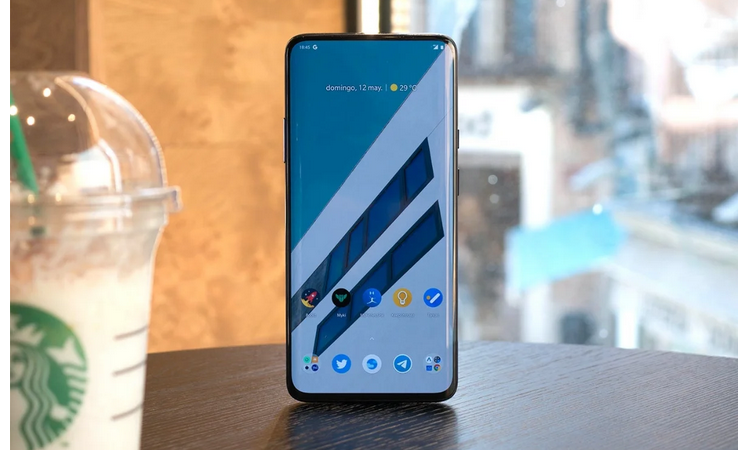
The OnePlus 7 Pro is the first model from a “recognized” firm to hit the market with a screen refresh rate of 90 Hz. I can not do anything other than celebrate and praise this decision, which is risky – -After all, mounting a panel of this type supposes an extra cost, in addition to entailing certain inconveniences such as higher energy consumption, gives the device a unique personality. It makes it capable of distinguishing itself from the rest of the models. That forms the header of the current telephone segment.
Regarding experience, the user using the screen of this OnePlus 7 Pro, whatever the situation, is an absolute delight. The sensation of fluidity provided by 90 Hz is incomparable – the difference, of course, is not as noticeable as going from 60 to 120 Hz would be – and the jump in resolution is the finishing touch to one of the best visual experiences that I have been lucky enough to try throughout this year that has already reached its halfway point. Of course, knowing that these improvements would result in high battery consumption, OnePlus offers in the terminal settings the possibility of reducing both the refresh rate and the panel resolution to Full HD + through software. However, my recommendation is to completely forget about these options and enjoy the gigantic and excellent panel with which the OnePlus OnePlus delights us in its best phone to date. It is worth it.
There are no complaints about the basics of the panel either: sharpness, contrast, and viewing angles are optimal, and only the maximum brightness level is surpassed by models like the Samsung Galaxy S10 +, although the difference is not abysmal.
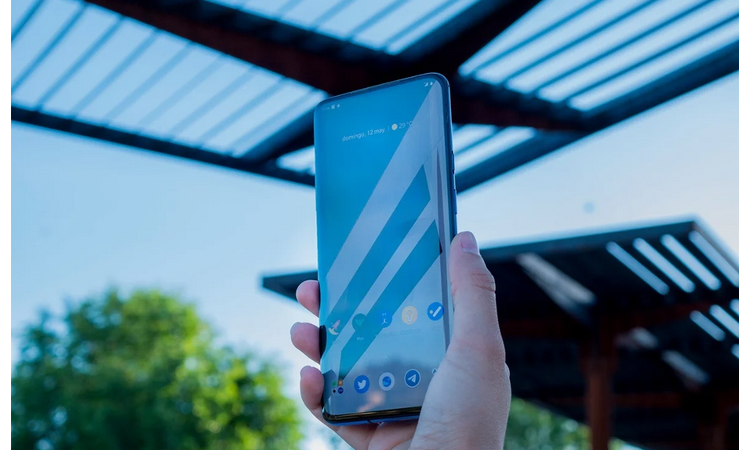
Now, as much as the Display Mate experts have given the best evaluation ever given to the screen of a smartphone to this 7 Pro, we do have to consider certain not-so-positive aspects. The first and most striking is the pronounced curvature on both sides of the Gorilla Glass 6 glass. As in the latest Samsung and Huawei models, the curve helps to give the device a more modern and stylish look, but due to the very nature of this material, the curvature causes specific alterations in color depending on the angle from which it is viewed. . Despite this, I have to mention that during my time of use with the phone I have not suffered any “ghost touch” due to the curves, a drawback that the Galaxy S10 + did sin to a greater extent. Of course, in defense of the South Korean model, I have to say that, unlike the 7 Pro, where the curve is a mere aesthetic element, in the S10, it is possible to take advantage of it through the edge of the tool.
The panel’s curvature causes specific alterations in color depending on the angle from which it is viewed.
Nor can you miss the fact that we are facing a large terminal. Very big. Its almost 6.7 inches diagonal forces the phone’s chassis to grow to exceed 16 centimeters in height and almost reach 7.6 centimeters in width, with a weight of 206 grams due to the use of heavy materials such as glass and aluminum. Adding to the narrow margins that surround the screen, especially the bottom one, means that using the phone with one hand is not an easy task, although the curvature of the smooth rear glass is of some help in terms of ergonomics.
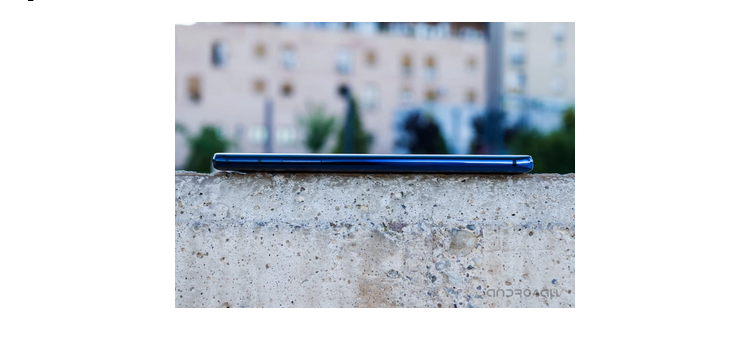
Of course, a panel of such caliber requires functions to match, and luckily the 7 Pro comes loaded with them. To get the most out of this screen, OnePlus introduces support for the DCI-P3 and sRGB color spectra and allows modifying the white balance to suit the user. A is also introduced night mode “2.0” – in which, honestly, I do not find differences concerning those included by other manufacturers -, in addition to a video enhancement mode that adapts the colors of the screen and raises the level brightness to the maximum when opening those apps that are generally used to consume content of this type – such as YouTube, Netflix, Prime Video or other streaming platforms – as well as compatibility with the standard HDR10 +.
Experience and performance
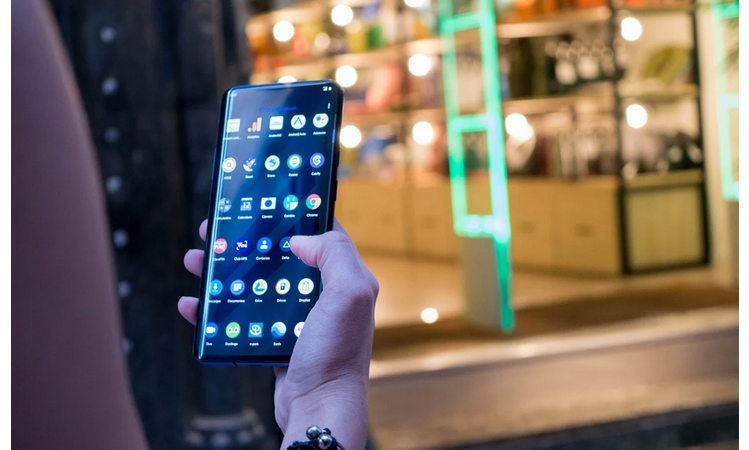
Seeing the good results that the seems to be giving Qualcomm Snapdragon 855 platform, it should not be surprising that this chip, added to the high amount of RAM that the 7 Pro mounts – our test unit, in particular, is the version with 12 GB of RAM and 256GB of storage – and a breakthrough UFS 3.0 storage technology deliver an outstanding experience in every way.
There is absolutely nothing that can resist the new terminal of the Shenzhen firm, and one more year, the latest installment to arrive in its catalog is worthy of the title of the fastest mobile that we have ever tested. This also helps, and a lot, the software based on OxygenOS, which in its version 9.5 reaches a point of maturity never before seen in a company mobile.
With its Snapdragon 855 and a massive amount of RAM, nothing resists the new terminal from the Shenzhen firm.
System animations OnePlus’s gestural navigation system – disabled by default -, the coherence that exists between the different elements of the interface or the reduced response time of the screen – or latency, as you prefer to call it -, among many other things, denote that OnePlus has taken great care of the software that runs through the circuits of its new phone and that the work in this regard goes beyond having provided the phone with the most cutting-edge features on the market.
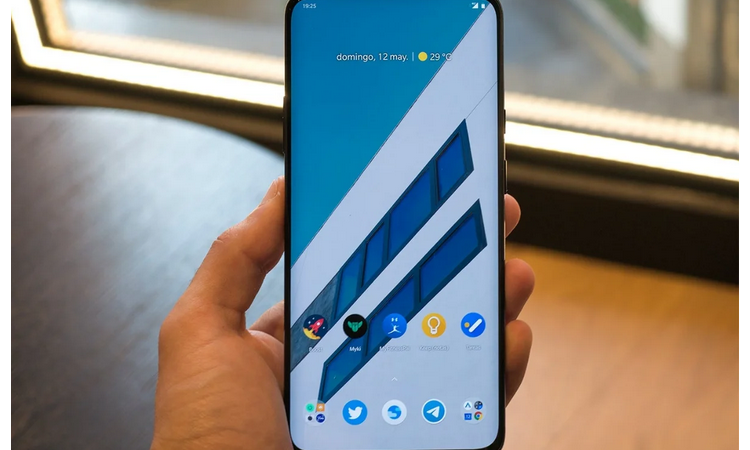
For yet another year, the company’s customization layer, based on Android 9 Pie, integrates only the necessary additions to complement the pure Android experience without getting the software dirty. There is no trace of bloatware. Although OnePlus includes some of its applications, there will be no problem uninstalling them and using Google apps or any other third-party alternative. In addition, it is reassuring to know that OnePlus is committed to keeping the device updated to the latest version of the system for a minimum of three years, on whether we have in mind the stones in the way that the firm has found. In the past about support…
It does not fail either in terms of autonomy. Without becoming its most vital point or surpassing other rivals in this regard, the 4,000 mAh capacity battery offers the expected result of mobile in this category – although The outcome will depend, and a lot, on the screen configuration that is used – with days in which we can reach, without too many problems, to reach 5, 6 or up to 7 hours of screen on. And when we have to go through the charger, we will find the fast charging technology Warp Charge 30 so far used only in the OnePlus 6T McLaren Edition, with a power of 30W that allows being the phone charged from 0 to 100 in a period close to an hour.
Everything else
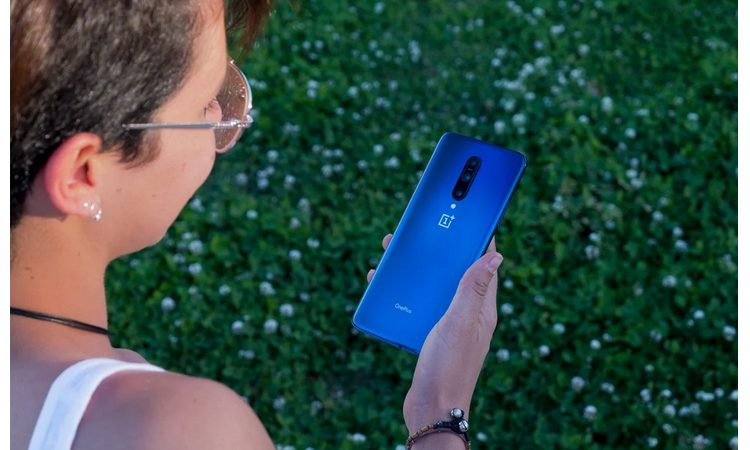
Another of the most surprising aspects of the OnePlus 7 Pro is the company’s ability to have found solutions to all – or almost all – the drawbacks that the user community has been complaining about for several generations. So much so that during this time of use, it has been met, and a lot, to find defects worthy of mention difficult for as the typical inconveniences that the models carried it were not present.
That the audio of the previous models was terrible? The 7 Pro mounts a Dolby-tuned stereo speaker system, which is now on a par with the rest of the top-of-the-line terminals, both in volume and sound quality.
That the 6T vibration motor was not very powerful? This sense–. The X-Axis Haptic Motor technology solves the problem. It provides the device with one of the most robust, accurate vibration motors with the fastest response we have ever tested on an Android mobile. Along with the Pixel 3 and the latest LG models, the OnePlus 7 Pro is one of the models closest to reaching the level of the latest iPhones and its Taptic Engine – although Apple models are still the kings in the world. T
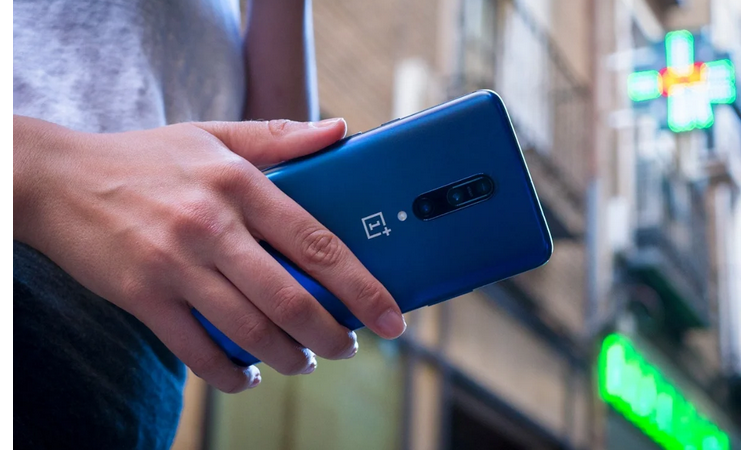
That there are no notification LEDs? The curved screen comes to the rescue through a pleasant flash of color that appears on both sides to warn of new notifications received, visible even when the phone is upside down – although yes, like last year, I still miss a mode “always-on” display screen that replaces the Ambient Display–. Unfortunately, this option is not customizable at the moment.
That the fingerprint reader on the screen was not convincing in the 6T? A larger sensor and a new triple-lens structure make the process of fingerprint identification and terminal unlocking noticeably faster and more accurate. It’s still not as fast as a capacitive sensor, but the failure rate has dropped significantly.
There doesn’t seem to be a single section that OnePlus has overlooked when designing this 7 Pro.
And so with everything. There does not seem to be a single section that OnePlus has overlooked when designing this 7 Pro; of course, that was practically an obligation if its idea is to rival the reference models of such a saturated market and with such a hierarchy—defined as it is that of telephony, more specifically that of the high-end range.
It is true that wireless charging is not present in this edition either, or that the terminal does not have any certification that guarantees its resistance to water – despite OnePlus telling us otherwise -. But, honestly, I would lie to myself, and you, if I said that details like these are enough to destroy all the good that OnePlus has managed to do with this model, which we remember, is its first assault on the most segment premium of the mobile telephony.
The not so good of the OnePlus 7 Pro
Photography
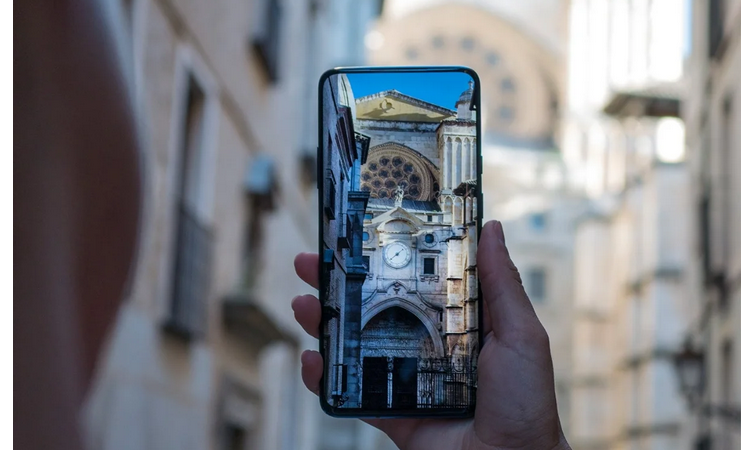
OnePlus intends to sell us its most ambitious creation to date at a price that starts – in Spain – from 719 euros and goes up to 829 euros. That, therefore, places the terminal in the “Ultra Premium” segment – such as Its firm calls it -, and thus receives the arduous task of rivaling models such as the Samsung Galaxy S10, Pixel 3, Huawei P30 Pro, and other heavyweights. And if there is one aspect by which these models differ from all other high-performance mobiles – some more than others – it is because of their photographic section. On the OnePlus 7 Pro, the difference is not so noticeable.
That, however, does not mean that the OnePlus 7 Pro’s camera is terrible. It is not. Those of you who are already familiar with the type of terminal analysis that we usually carry out in Andro4all will have seen that, for the first time, we have not separated this review into the sections “The best” and “The worst,” but into “The best “and” not so good.”
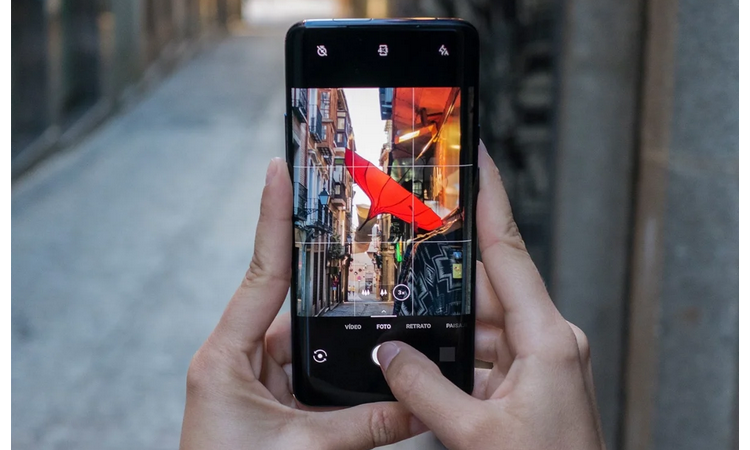
This variation is because, although the section of the new OnePlus terminal is far from reaching the level of its most direct rivals in terms of price, the improvements carried out in this aspect concerning the 6 and 6T are significant. It is appreciated that OnePlus continues to score points in a section that, although for some it is not so important, it is clear that it has become the yardstick when determining whether a terminal deserves to be at the top of the telephone sector, or instead it passes to a lower category despite the rest of its virtues.
To make it more transparent, let’s look at it another way: if at a particular moment I need to take a quick photo and I carry the OnePlus 7 Pro next to the Pixel 3 in my pocket, I will not think twice when it comes to getting the phone from Google. However, it is most likely that this situation will not occur because the camera of the OnePlus 7 Pro, unlike that of the previous generation, is good enough and versatile, and I will not miss that of any other terminal except on particular occasions. I will expand more on this aspect in its corresponding section.
So are the cameras of the OnePlus 7 Pro
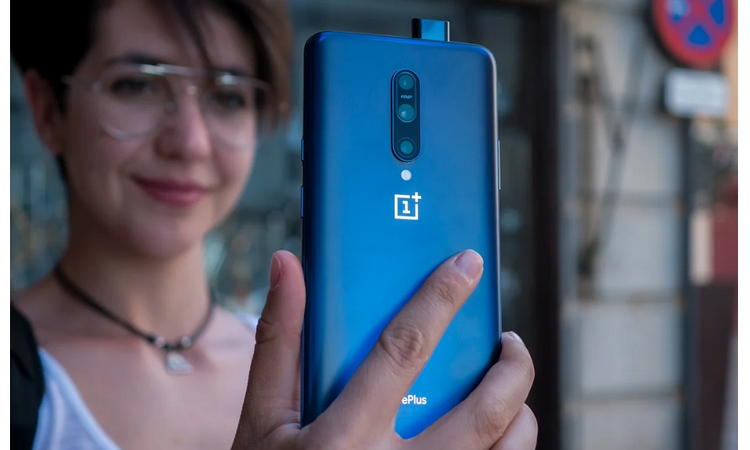
2019 seems to be the year in which the photographic versatility of the terminals prevails over the rest of the sections. We have seen airports that mount impressive optics with mechanisms similar to that of a periscope to offer hybrid zoom of up to 50x, sensors that are based on the speed of light to measure the distance of the camera concerning the objects that appear in the image, and even mobiles with five cameras on the back that have become the nightmare of cryoprobes.
To compete with them, OnePlus had a double job ahead of it: the first, to continue improving the image quality offered by its phones, and on the other, to add extra functions so that the 7 Pro’s camera reached a level of versatility sufficient as so as not to clash with the rest of the models of this generation.
The Chinese firm’s solution to this challenge has been to take a similar path to other manufacturing companies. The 7 Pro mounts a triple rear sensor, headed by a Sony camera with 48 megapixels of resolution, with f / 1.65 aperture and which is supported by the concept Pixel Binning that we explained in more detail at the time to generate images with a resolution of 12 megapixels, thus saving storage space since the final files are smaller, but introducing more information in each capture. This sensor also has an optical and electronic stabilizer.
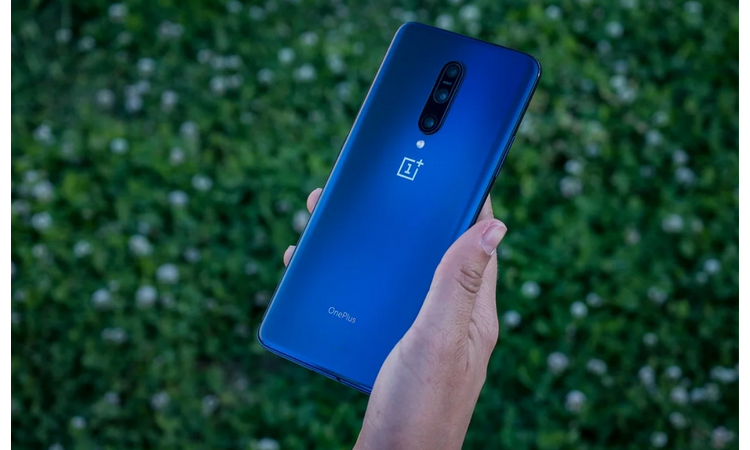
Right next to is one of the main novelties of this year: one sensor “Tele” focal 8MP and 2.4, capable of optical 3X zoom –equivalent 78 milímetros–. This camera is also optically stabilized and is used when capturing images with portrait mode, which will force us to move a little further away from the subject than usual due to the camera’s zoom when capturing.
In third and last place, another 16-megapixel camera appears on the scene and stands out from the rest for offering a unique perspective. It is an Ultra Wide sensor capable of capturing a 117º angle of view and a 2.2 focal length – very similar to the Super Ultra-Wide sensor on the Samsung Galaxy S10 and S10 + -.
Looking at the repertoire of sensors that the 7 Pro mounts on its back, it seems clear that OnePlus has opted to offer a lens for every situation. However, it is useless to integrate many sensors if we do not enjoy processing that meets expectations. The firm has developed new algorithms that are part of what OnePlus calls “UltraShot to cover this aspect” to cover this aspect.
OnePlus claims that the front camera mechanism has been tested for durability over 300,000 times.
At the time of selfies, we are going to find a camera that appears and disappears through a motorized mechanical system located in the upper left part of the phone, which alerts us each time it carries out its function through a pleasant sound and futuristic, and a light animation that appears at the top of the screen. The mechanism, according to OnePlus, has been tested more than 300,000 times to certify its durability, which is equivalent to use close to 150 times a day for five years. In addition, a system is included that relies on the readings carried out by the accelerometer and the gyroscope to hide the camera when the device detects that it is an incomplete fall. Of course, you will have to be careful with the particles that could get inside the flange when the camera is deployed.
The sensor that hides this tab is a Sony IMX471 with 16 megapixels of resolution, a 2.0 focal length, and an electronic stabilizer.
Behavior by day, portrait mode, and at night
Using the OnePlus 7 Pro’s camera in situations where the light is on our side will generally result in pleasant images, with vivid but true-to-life colors, and correct exposure and contrast levels – using, of course, the automatic mode, which after all is the way that the vast majority of users will use the camera. By enlarging the images and looking at the details, we see the less good part of this photographic section.
As in previous generations, the OnePlus processing tends to reduce noise by smoothing the image. Although this solution serves its purpose, it is also the cause of a certain lack of sharpness and detail in most of the captures we will take with the telephone.
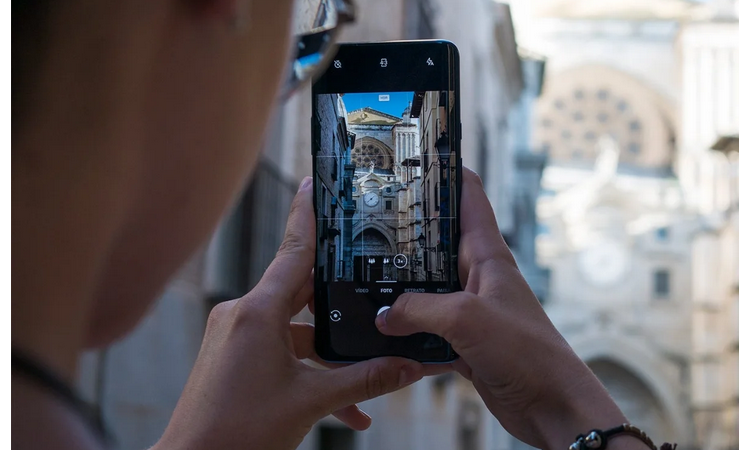
The HDR mode comes into play automatically, adjusting the dynamic range of catches to generate more decadent color rendition and contrast images. However, it does not seem that there is an option to enable or disable the options that are part of the UltraShot mode, so we understand that they are inherent in the processing algorithm of the camera software.
However, the main asset of this photographic system is the sum of the two extra sensors that bring new approaches – never better said – to the experience with the camera. The 3x zoom is by far the most fun to use and, without a doubt, the one that I have taken the most advantage of these days even though its lower resolution concerning the primary sensor is affected by the final quality of the image.
The results are promising, both in terms of clipping and the naturalness of the blur. The portrait mode does not show many differences in terms of options concerning the last generation – there is no option to modify the blur level or to edit the focus point after taking the image – although the use of the TV to capture This type of image will force us to move away from the subject a bit more than usual when framing the shot. We have found some focusing problems, especially when what is intended is to apply the background blur effect to an object.
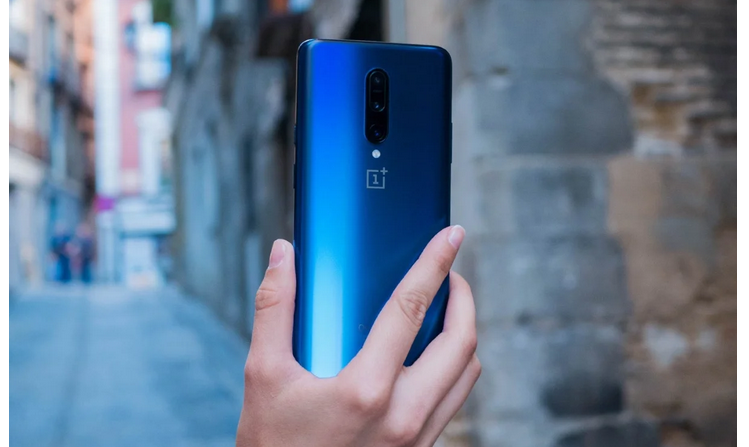
Finally, the sensor Ultra Wide, as in the rest of the mobiles that have already opted for this solution, brings a new perspective to the photographic experience. It will probably not be the camera that is used the most throughout a day of photography. Still, it never hurts to have a sensor of this type on hand for when it is needed – see photos of landscapes or of groups of several people in places where there’s not much room to wander away. And in those moments, the 16-megapixel camera fulfills its function without any problem. Thanks to the “Wide Angle Lens Correction” option included in the camera settings, it will be possible to avoid, to some extent, one of the main drawbacks. When using this type of camera, such as the distortion generated at the ends of the image.
The rear camera, day photos
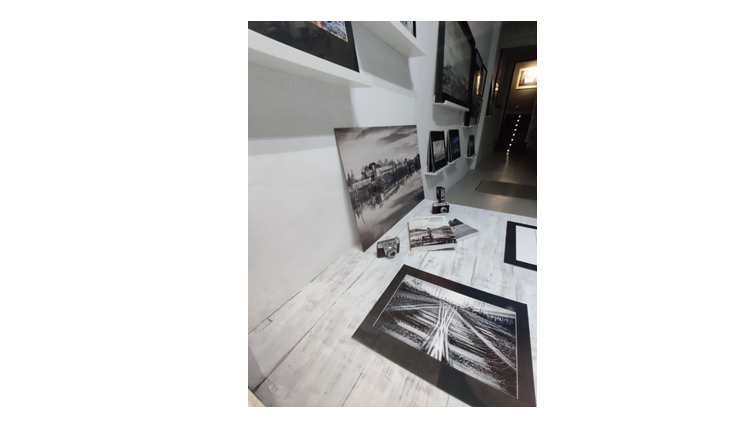
At night and indoors with low light, the OnePlus 7 Pro defends itself well enough to capture what little light is available and generate colorful images. However, we will find an old enemy of OnePlus as it is already famous “watercolor effect.” Again, I am terrified that this drawback is due to the company’s intention to try to soften the image excessively to reduce noise by all means.
We also have an available Night Mode. Like the one used by firms such as Google or Huawei, saving distances takes long exposure captures to capture light in a sustained way and thus generate brighter images with less noise. The results are generally positive, although the time required to perform the capture is somewhat excessive, which was not the case in the previous OnePlus 6T. However, this is likely because the device we have tested does not yet have the final version of OxygenOS with which it will hit the market, presumably solving problems like this.
The rear camera, night photos

Front camera
The sensor that gives life to the front camera maintains resolution and size concerning the OnePlus 6 and 6T, which already offered us a satisfactory result. The changes in this regard are not too noticeable, except that this new camera can capture more detail than last year, thanks to an, I’m afraid improved focus .
The rendering also skin color is good, and the naturalness of the blur when using portrait mode is comparable to that of the rear camera. At night, yes, the focus suffers something more, and again the smoothing of the one that the front camera was already sinning in this same situation comes into play.
Video recording
The videos recorded with the OnePlus 7 Pro leave us with good taste in every way, both for video quality and for stabilization. Keep in mind, of course, that the optical image stabilizer will only work up to 4K resolution at 30 FPS while increasing the rate frame per second the camera relies on the electronic stabilizer. Regarding the audio captured through the microphone, we did notice a specific “metallic” effect, which manifests itself, especially when capturing voices or high-pitched sounds.
OnePlus 7 Pro: Andro4all’s opinion and final thoughts
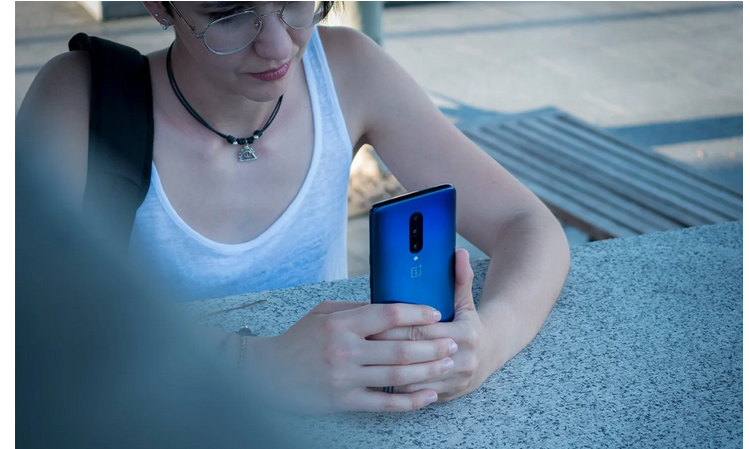
I had been waiting for a long time for the day when OnePlus dared to launch a mobile without the usual commitments, and that it did not arrive accompanied by justifications or excuses because of a price – each timeless – reduced that would force the brand to cut in certain aspects.
Yes, the OnePlus 7 Pro may have overthrown the concept of flagship killer – from which the firm, on the other hand, had already dissociated itself for a long time – and it may have thus become just what The original OnePlus aspired to overthrow. And from my point of view – and above all, considering that there is still a OnePlus 7 for those looking for mobile almost as capable at a more competitive price – there is absolutely nothing wrong with the company being daring to risk and experiment with his first assault on a segment that had not welcomed a new player for a long time—instead of the complete opposite. Still, in exchange for that, we find one of the best phones of this year, 2019.
Buying the OnePlus 7 Pro means buying a phone designed with care, with the most cutting-edge technical section in the entire telephony sector, versatile and good quality photography, one of the best screens ever seen on a mobile, the same fast software, clean and customizable as always, and an endless list of small details that are responsible for completing the pleasant experience that the device offers on a day-to-day basis. All this has a price, of course, although seeing that the leading manufacturers are not hesitating to continue the price escalation beyond the 1,000 euro barrier and knowing everything that the latest creation of the Chinese brand offers, the 719 of this OnePlus 7 Pro is much more attractive.
Price and where to buy the OnePlus 7 Pro
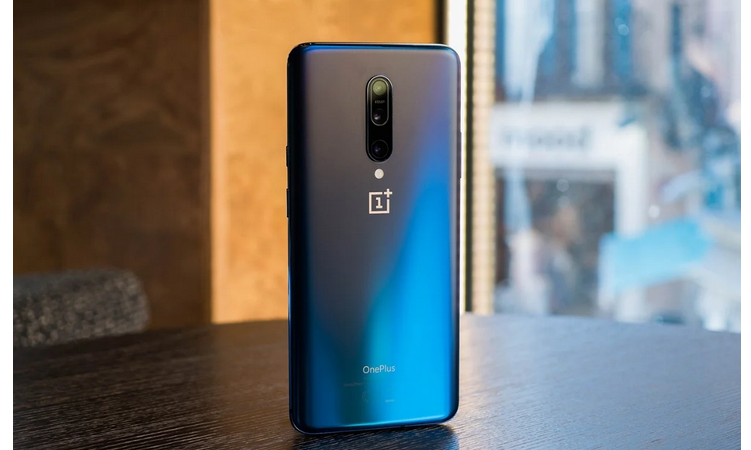
OnePlus will not keep all those who wish to get hold of their new creation waits too long. Terminal reservations begin today through the company’s official website, and they can be purchased from next week. As for the price, the OnePlus 7 Pro starts from 709 euros in Spain and 699 euros in other countries of the European market. From there, it amounts to 759 euros for the variant with 8 GB of RAM and 256 GB of storage costs, and finally up to 829 euros for the most cutting-edge model and the protagonist of this analysis. Although you also can get it in MediaMarkt .
| OnePlus 7 Pro, opinion and note from Andro4all | |
| Should you buy the OnePlus 7 Pro? | |
| In favor |
|
| Against |
|
| Conclusions | Four years testing the terrain of the affordable high-end have served OnePlus to reach this point of maturity and pull its first “Ultra Premium” phone from its sleeve. Far is the original “flagship killer,” and its price of 269 euros. The brand risks creating its most ambitious terminal to date, and the result is close to perfection. |
| Punctuation |
OnePlus 7 Pro And finally, excellence. |

Sharlene Meriel is an avid gamer with a knack for technology. He has been writing about the latest technologies for the past 5 years. His contribution in technology journalism has been noteworthy. He is also a day trader with interest in the Forex market.










